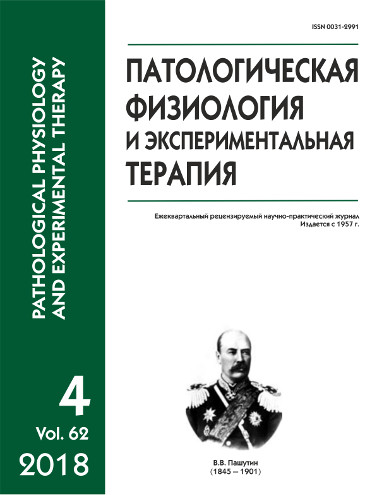Evaluation of arginine efficacy in control of steroid myopathy induced by long-term dexamethasone treatment in white rats
Abstract
Aim. To study the efficacy of arginine (Аrg) in control of adverse effects of long-term dexamethasone (D) treatment on the mixed-type skeletal muscle with prevalence of fast fibers (m. tibial anterior). Method. Experiments were performed on sexually mature female rats (190—210 g) divided into 4 groups: control (n = 10, C group), experimental group 1 (n = 10, dexamethasone treatment for 30 days, D group), experimental group 2 (n = 10, administration of dexamethasone in combination with arginine for 30 days, D + Arg group), and experimental group 3 (n = 10, arginine administration for 30 days, Arg group). Dexamethasone (KRKA, Slovenia) was injected at a dose equivalent to the human therapeutic dose (0.25 mg/kg, i.p.) every second day. Arginine (Kardioarginine, Zdorovje, Ukraine) was injected at a dose of 100 mg/kg, s.c., daily. The function of anterior tibial muscle was studied on anesthetized animals (sodium thiopental, 100 mg/kg) using electromyography and myography. Muscle contractions were induced by stimulation of the fibular nerve with suprathreshold electric current. Results. Development of iatrogenic hypercorticoidism was associated with deterioration of the muscle function. Thus, after 30 days of the D treatment, impairment of muscle electrophysiology was observed, including prolongation of the M response latency (19%) and a decrease in its amplitude (37%) with unchanged duration; increased frequency of polyphase potentials (up to 40%); reduced reliability (70% of animals) and pathologically significant facilitation of synaptic transmission (50% of animals) or its depression (20% of animals) at an optimum frequency (30 imp/s) of fibular nerve stimulation. The long-term D treatment resulted in decreases in the number of activated motor units (43%) and muscle weight (10%) and impairment of the amplitude and temporal parameters of a single contraction, including profound decreases in the single contraction amplitude (53%), latent period (48%), and shortening phase (46%). The Arg+D treatment attenuated the D adverse effects on the muscle function. Thus, Arg prevented the prolongation of M response latent period and decreases in its amplitude and number of activated muscle motor units, and somewhat decreased the incidence of reduced synaptic transmission reliability (40% of animals vs. 70% in the D group) but did not completely prevent it. Аrg did not prevent the increase in polyphase M-response frequency, but controlled the decrease in its amplitude. Аrg+D prevented the decrease in muscle weight and the impairment of single contraction amplitude and temporal parameters typical for animals of D groups. Conclusion. The study performed on an in situ animal model confirm the ability of Arg to effectively control some adverse changes developing in the skeletal muscle during long-term D administration.






